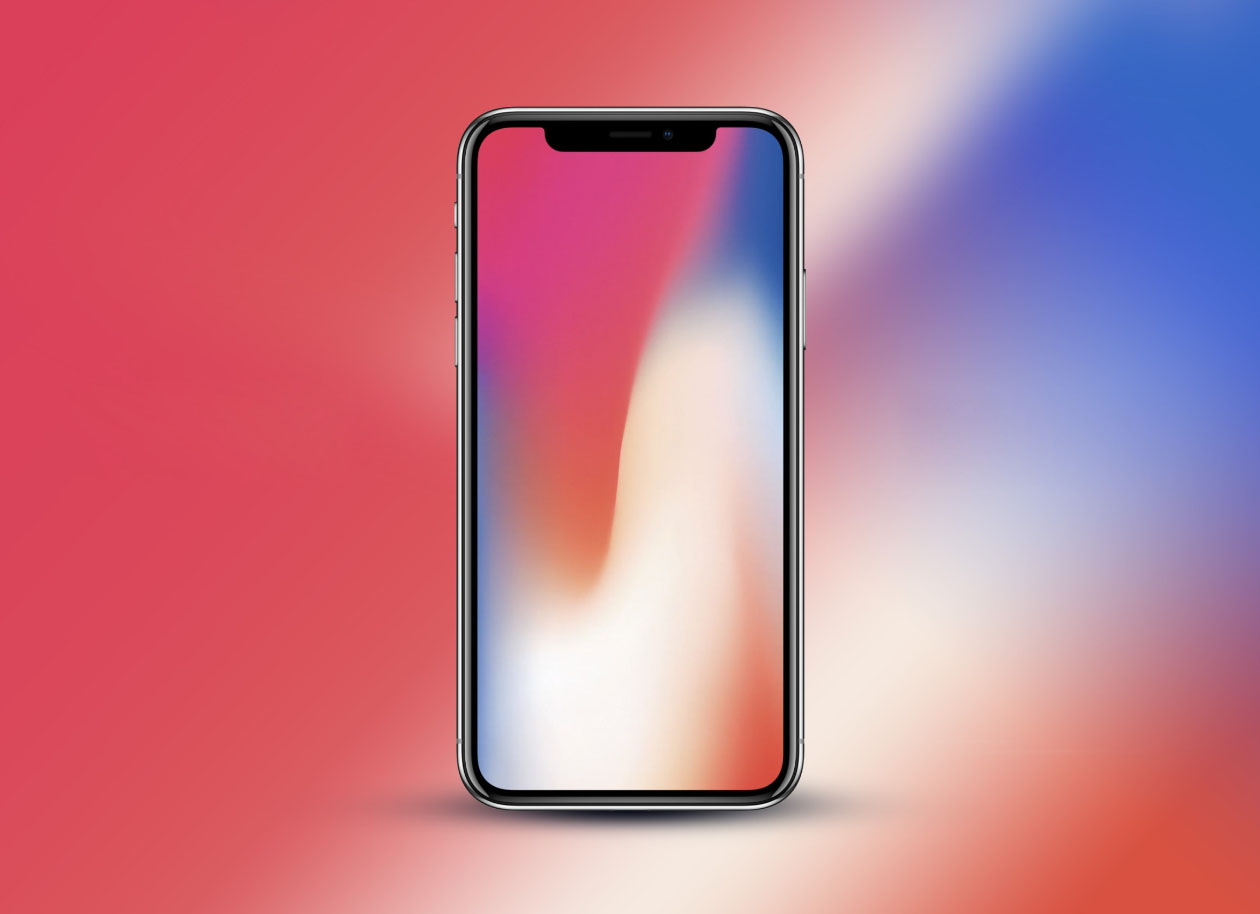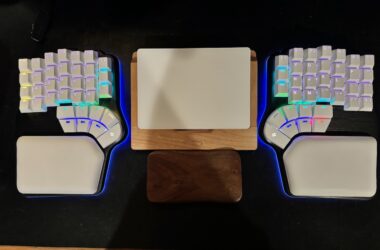When they released the iPhone 7 and 7 Plus last year with the same physical form factor, everyone knew that Apple had something special in mind for the 10th anniversary of their flagship product. A year later, amidst milder shortages than years past1, they’re delivering a premium phone with an all-screen front and a 3D face-scanning sensor. And while I had patiently waited a jet black iPhone 7 Plus a year ago, I was enamored by the prospect of a larger screen in a smaller body. so I took to spamming the refresh button on apple.com at midnight, putting in the earliest possible preorder for an iPhone X.
Despite having a shipment of phones stolen from the chosen Apple store, I was able to stroll in on the morning of the launch and walk out with a new iPhone. A week or so in, here are my impressions.
Hardware
Apple did a great job in making the iPhone X feel like a well-built luxury product. It’s noticeably heavier than even the Plus-sized phones, but the weight is well-balanced and, along with the stainless steel and glass body, invokes quality construction. Of course, the giant 5.8″ OLED screen provides a fantastic first impression, and having pocketed the bigger Plus phones the past 3 years—which required developing strategies to minimize the discomfort of sitting down with one—going back to a skinnier one has been pleasant.
Both the front and back cameras have gotten better, but iPhones have been taking excellent pictures for years, and from an imagery quality standpoint, are at the limits of what is possible with the smartphone form factor. There are a few small incremental improvements like 4K videos at 60 FPS and image stabilization in both rear cameras (which makes 2x zoom pictures much more usable), but progress is now made more via software processing with the likes of Portrait modes and lighting simulations.
The iPhone X’s durability remains an open question. It’s outrageously expensive to replace either of the glass surfaces, and stainless steel has already been proven to be highly scratchable since the material was introduced with the first Apple watch. For now, I’m only putting on a simple screen protector on the front2; the materials and design are too nice to be covered up by a gaudy case.
The notch is fine.
New Features
There are two primary features to the iPhone X above its more pedestrianly-numbered ancestors: a new screen, and a true depth camera for face scanning.
The new screen is better in a number of ways: it’s an OLED screen which draws less power but provides a high dynamic range of colors; it supports automatic brightness and tonal adjustments via its True Tone display feature; it takes up the entire front of the phone while following the contours of its rounded corners. Apple makes a habit of improving the quality of its displays with every iteration of all of its hardware, so even if it’s technically the best screen they have ever shipped, the incremental improvement is mostly expected3.
The true depth camera enables animojis and Face ID. The former is more of a silly application of cool technology, but Face ID has the potential to change user behaviors more drastically, similar to how Touch ID has made fingerprint sensors and locked phones the default. Right now, the feature mostly works, with minor hiccups about 15–20% of the time for me due to lighting conditions and not holding the phone at an optimal distance.
More problematic is that scanning a face is a more passive action than reading a thumbprint: the latter requires explicit intent from the user, and iOS software that relied on Touch ID for authorization should be redesigned to allow the user to express their intent via something in addition to a Face ID match. The new Apple Pay UX does exactly this and works fine, but iOS will automatically attempt to replace every Touch ID prompt with Face ID. I’ve locked up multiple apps this way while setting up my phone, and I’m resorting to typing in passwords until they’re updated to be Face ID compatible.
Software
The major changes with the iPhone X’s software experience are really the new screen size4, and the new gestures that make up for the lack of a dedicated home button.
The new screen size—curved corners and all—is really optimized for tall content panes. I don’t think Apple itself knows what to do with the notch and rounded corners, so most interface elements stay within the safe rectangular area and left the nooks and crannies as white space. Unfortunately, many apps haven’t been updated with the right layout system to automatically work with the screen, so they end up framed with giant black bars. This is one instance where the unique screen aspect ratio of the X, despite its bigger physical dimensions, ends up being substantially smaller than a Plus-sized phone.
On a more positive note, the new home gestures work great once you learn the basic maneuvers. Yes, it’s a worse form of mystery meat navigation, in the sense that it’s even less discoverable and requires external tutorials to teach users where to swipe their fingers. But after a short period of breaking into the new UX (and unlearning a decade’s worth of muscle memory hitting the home button), the opening/closing app animations swipes feel more responsive as they sync with finger movements, while task switching happens faster after a bit of practice. Apple made sure to prioritize the system UI process, so the home gesture is always available even when apps or animations are frozen. Going back to the home screen is a safety valve on mobile interfaces, and iOS on iPhone X will continue to let its users activate the system, under any circumstance.
The Future of the Phone
When Apple first announced the iPhone X, they billed it as the “future of the smartphone“, a tentpole release that will define what the next decade of phones will be. Strip away the hype, however, and that statement is still relevant, but more prescient about what little there is left for smartphones to continue to evolve towards. The rumors of an iPhone X successor speak of small improvements like more physical screen sizes and slightly better construction; beyond that, there’ll probably be additional attempts to shrink sensors and add tiny bits of screen while shavings tenths of mm’s off the phone’s thickness.
Of course, the phone itself is still an excellent device, continuing the tradition of substantially improving on its predecessors in both computational and hardware capabilities. For iPhones, this is a major leap, one that does mostly lives up to the new name and the general excitement around new Apple hardware. There is probably no good way to recapture that feeling of endless potential with the first iPhone, but I’m happy to see Apple—and other smartphone makers—keep on trying.
Specifically, compared to super-late shipping times of the iPhone 7 in jet black.↩
And that is mainly because I do scratch the display, as I’m fond of putting my phone face-down in meetings to keep notifications from being a distraction.↩
For me, the biggest single-generation jump will always be the prescient move to retina displays.↩
The notch ends up being a non-issue since apps can’t access the screen space around it anyway.↩




